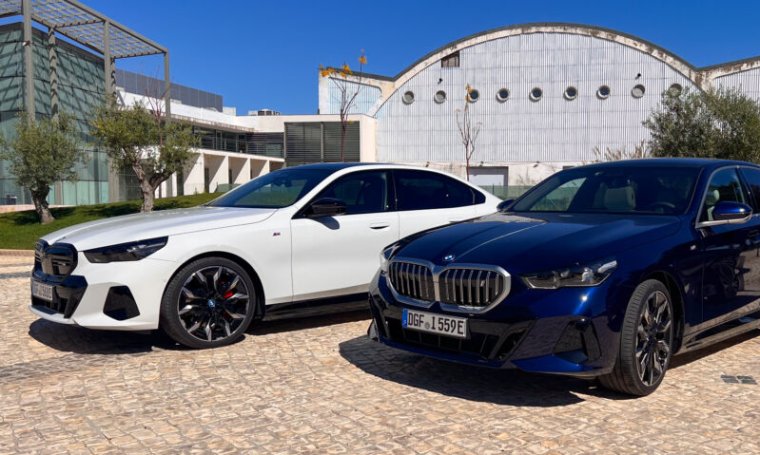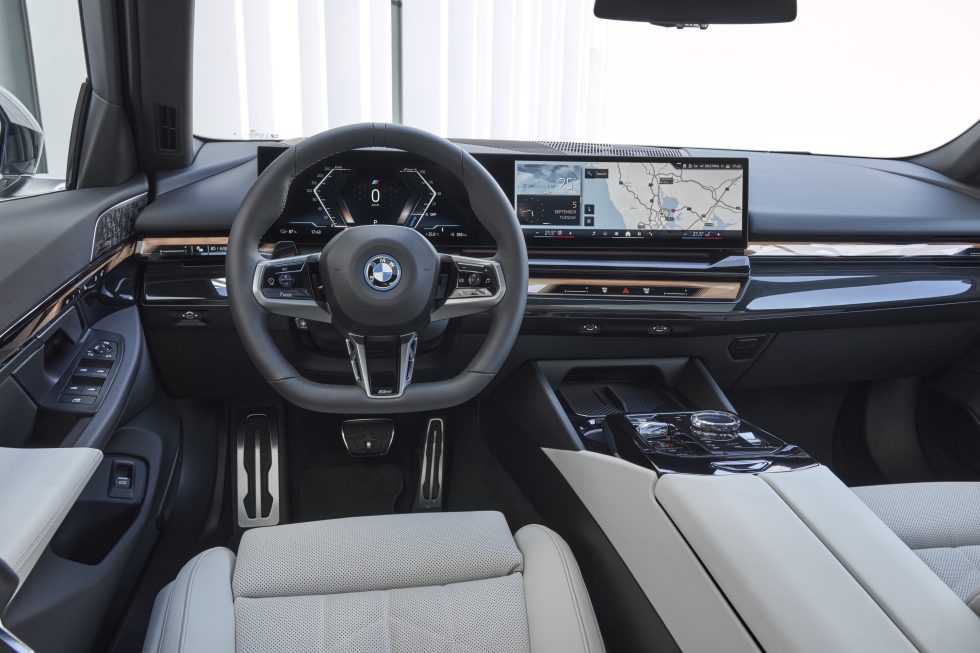
Jonathan Gitlin
LISBON, Portugal—Electric vehicles are becoming normalized. Take BMW, for instance. When the electric i3 went on sale a decade ago, it looked—and still looks, in fact—like nothing else on the road. Fast forward to 2023 and we’ve reached the point where you’d have to be very observant to spot the differences between the fully electric and internal combustion versions of the new BMW 5 Series. In fact, it’s a testament to the importance of the fully electric version that the 2024 BMW i5 is the one the company chose to offer up to the world’s journalists for a first drive.
The eighth-generation 5 Series—internal BMW code G60, for those who keep track—broke cover this past May. It has a more restrained look than other electric BMWs we’ve driven recently.
Back when its range was mostly just 3, 5, and 7, they all wore roughly similar kidney grilles. But in the 21st century, BMW has series going from 1 to 8, not to mention SUVs, with almost as many variations of that famous grille among them. Here, it’s a horizontal design, and it’s technically not a grille if we’re being literal—there’s no grate or mesh covering a big air inlet. Behind the plastic exterior live some of the car’s forward-looking sensors. And for those who think the design is maybe too restrained, you can opt for an illuminated surround.

BMW
The 5 Series makes use of the same CLAR modular platform as we’ve seen in other recent BMWs. Short for cluster architecture, it was designed from the ground up to accommodate a battery electric powertrain; the volume under the cabin occupied by the battery in the all-electric i5 is used to package drivetrain components and the fuel tank in the gasoline-powered i5s, and that plus a battery pack for the plug-in hybrid version. The North American market will see a 48 V mild hybrid and a plug-in hybrid 5 Series with engines, but today is just about the EV.
RWD for efficiency, AWD for speed
First, there are a pair of electric powertrain options to pick from. The $66,800 i5 eDrive40 is the base model and features just a single electrically excited synchronous motor that drives the rear wheels. BMW is proud of the fact that its motors use no rare earths, and one benefit of this design is that there’s no drag from the motor when it’s not being powered, which makes coasting easy and efficient. The motor generates 355 hp (265 kW) and 295 lb-ft (400 Nm) of torque, with short bursts of up to 317 lb-ft (430 Nm) when using the boost mode.
There’s a suitably low drag coefficient that helps efficiency, too, such that BMW says the larger i5 is actually fractionally better than the smaller i4 eDrive40 on the European WLTP test cycle. The height of the battery pack has been cut by a little less than an inch (20 mm) compared to the pack in the larger BMW i7. There are four 72-cell modules and another three 12-cell modules above them along the centerline of the pack, with the battery-management system fitted in a strip above that. There’s a useable 81.2 kWh, which BMW thinks should achieve an EPA range of 295 miles (475 km) on a single charge.

BMW
With a relatively short amount of seat time in the car and a route that did not end where we started, I’m not able to provide a real-world efficiency number, but with the drive mode in D, it glides so effortlessly that you don’t need to touch the throttle pedal if the road has any downhill gradient. Even on a level stretch of road, it takes the air plenty of time to slow the car by even a few miles per hour.

